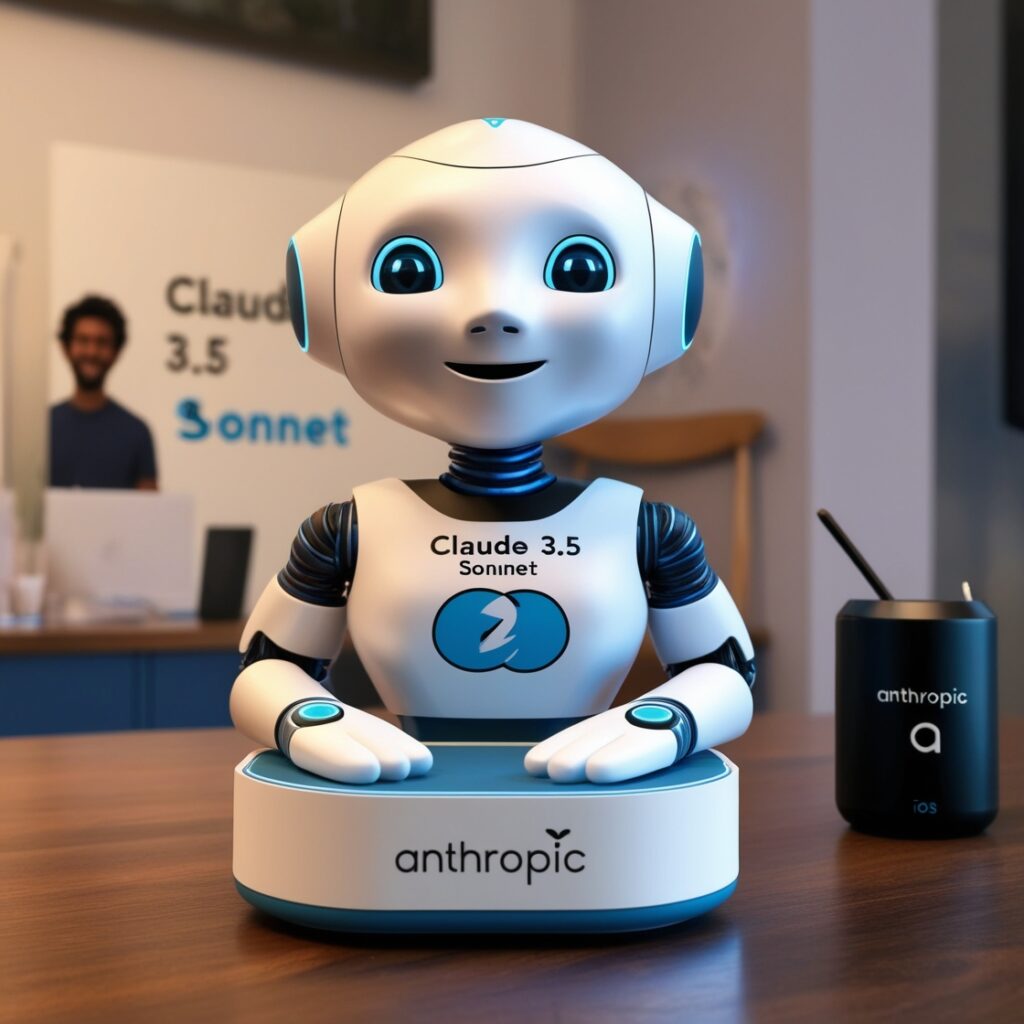The first language model for the company’s redesigned chatbot family, Claude 3.5 Sonnet, was unveiled by AI startup Anthropic, which claims it is among other things funnier, a better writer, and a more skilled software engineer. The Android app was released this week, having been preceded by the iOS version in late June.
Later this year, two more models—the Claude 3.5 Haiku and the Claude 3.5 Opus—will be released. Anthropic stated in a blog post from June that their goal is to significantly improve the tradeoff curve between cost, speed, and intelligence every few months, but they did not provide a timeline.
The Claude 3.5 Sonnet performs better than the Claude 3 Opus, the high-end model released in March. Anthropic claimed at the time that those previous models showed “human-like understanding.”
Claude, according to CNET’s Imad Khan, is “the chattiest of the AI chatbots,” responding to queries in a way that is easy to comprehend and human-like, making it the best AI chatbot overall for the majority of users.
With IT companies pitching ever-stronger language models behind ever-more-capable chatbots, we are witnessing a generative AI gold rush. A lot is at risk here. Today’s tools that cultivate devoted audiences are putting themselves in a position to be relevant for a very long time as we figure out how to use them at work and at home.
One-upmanship is the continual game here. May saw the release of GPT-4o, the newest flagship model from AI giant and ChatGPT creator OpenAI. At its developer conference, Google I/O, the next day, the company unveiled the Gemini 1.5 Pro. Apple revealed its interpretation of generative AI a few weeks later in June, dubbed Apple Intelligence.
The price of Claude 3.5 Sonnet
When Anthropic first released the model, it was free to use on Claude.ai and the Claude iOS app. Anthropic released a free Android app that is compatible with all plans on July 16.
Subscribers to the $20 and $30 monthly Claude Pro and Team plans, respectively, will have access to Claude 3.5 Sonnet with greater daily rate limitations.
Developers can create new apps that use the AI chatbot with the help of the Anthropic API.
Developers pay $3 million for each million input tokens and $15 million for each million output tokens with Claude 3.5 Sonnet, which includes a context window of 200,000 tokens. It speaks to the amount of data the model is able to retrieve during a specific session. Text must be divided into tokens by AI models in order for them to process and comprehend it. Four characters in the English language are roughly equivalent to one token.)
Google has boldly promised to raise Gemini 1.5 Pro’s context window to 2 million tokens by 2024. Currently, Gemini 1.5 Pro has one million tokens. The parameters of OpenAI remain undisclosed..Making direct comparisons between different models can be challenging.
The Claude 3.5 Sonnet comes with what?
The blog post claims that Claude 3.5 Sonnet is “exceptional at writing high-quality content with a natural, relatable tone” and that he has “marked improvement” in his knowledge of humor, nuance, and complicated directions. It’s also good at translating code, which is why Anthropic thinks it’s perfect for updating older apps and transferring codebases.
The Claude 3.5 Sonnet “has strong levels of comprehension and fluency” in German, Italian, Dutch, and Russian, in addition to the Spanish, Japanese, and French that we saw in Claude 3.
It is perfect for complicated activities like context-sensitive customer assistance or multistep workflows, and it is twice as fast as the most powerful Claude 3 model, Claude 3 Opus, according to the blog post. For its ability to read graphs and charts, Anthropic dubbed Claude 3.5 Sonnet its “strongest vision model yet.”
Claude in the office
With this visual and complex task functionality, Anthropic is attempting to reach a wider audience of users throughout their working hours.
Multiple Claude 3.5 Sonnet users can edit created items, including as papers and code, in real time thanks to a new feature called Artifacts.
According to the blog post, this preview feature represents Claude’s transition from a conversational AI to a cooperative work environment. This is just the start of Claude.ai’s larger goal, which will soon grow to facilitate teamwork.
Additional features for business users are being developed by the AI startup. According to a spokesperson, web search will enable Claude to safely browse the internet and provide users with real-time information along with source links. Memory will also enable Claude to remember user preferences and interaction history.
Gemini, Copilot, and Perplexity are a few examples of chatbots that are already online.
With the launch of its Team plan in May, Anthropic started to court business customers. At that point, Anthropic’s product lead, Scott White, referred to Claude as “a really smart coworker that helps me do my best work way faster.”
Once more, though, Anthropic is not by itself. Simultaneously, Adobe announced the release of their Acrobat AI Assistant for enterprise users while Amazon debuted Q, a generative AI business assistant. The program was released in beta form in February with the goal of assisting with information extraction from PDFs, text summaries, question answering, and information formatting for sharing.








